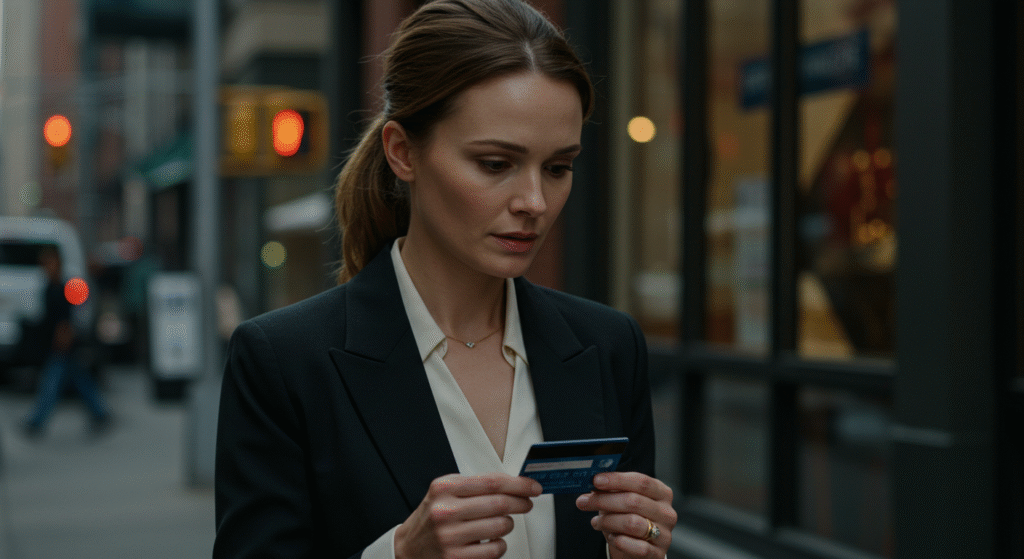Stacks of bills on the kitchen counter. Phone alerts that bring a rush of worry every time the bank balance dips lower. I know how heavy credit card debt can feel when you’re trying to keep up with everyday life. The good news? You don’t have to stay stuck in that cycle. With the right plan, you’ll find relief is possible, and freedom from debt is within reach.
I’ve seen real people transform their finances using practical, proven strategies. Paying off credit card debt fast goes beyond just making payments, it’s about making every dollar work smarter for you. This guide shares focused, realistic steps that give hope, restore control, and help you reclaim peace of mind. If you’re ready to stop feeling stressed about money and start seeing quick progress, you’re in the right place.
Build a Strong Foundation for Debt Payoff

Before you start knocking out credit card balances, it’s important to set up the strongest base possible. A solid foundation is what turns a stressful pile of bills into a clear, step-by-step plan. The more organized and intentional you are, the faster you’ll move toward debt freedom. Here’s how I recommend laying the groundwork for success if you want to use the top strategies to pay off credit card debt fast.
Know What You Owe
Forget the guesswork. Grab a notebook or open a spreadsheet, then pull together every credit card statement you have. Write down each balance, the interest rate, and the minimum monthly payment. Be honest and thorough, even if the numbers sting. When you see all your information in one spot, you’ll swap anxiety for confidence.
A helpful way to organize your debts is in a simple table:
| Credit Card | Balance Owed | Interest Rate | Minimum Payment |
|---|---|---|---|
| Card A | $1,800 | 21.99% | $43 |
| Card B | $3,250 | 17.99% | $81 |
| Card C | $950 | 27.49% | $28 |
Keep this chart handy, either on your fridge or in your phone, and update it as balances go down. Seeing your progress is motivating, and it helps you decide which debts to attack first.
Set Your Debt-Free Target
Having a finish line makes the process feel more real (and way less endless). Choose a date to be debt-free, whether it’s a milestone birthday, next New Year’s Day, or simply 18 months from now. Pin it somewhere visible.
Why does this work? A clear target transforms your plan from “someday” to “this year, for real.” For example, if you owe $5,000 and want to pay it off within one year, divide $5,000 by 12. You’ll need to pay about $417 each month, plus interest. Even if your target date shifts, aiming at something specific helps you stay focused.
Some examples of personal debt-free goals:
- “I want to have my cards paid off before my 40th birthday next June.”
- “Debt-free by Christmas, so I can finally enjoy the season.”
- “In exactly 15 months from today, I’ll make my last payment.”
Whether your goal is aggressive or more gradual, what matters is having a finish line that feels meaningful to you.
Create a Budget That Frees Up Cash
This is where your plan gets real. Take a good look at your past three months’ spending—what’s coming in, what’s going out, and where your money is trickling away. Most people are surprised by what they find. The trick is to make your budget work for you, so you free up as much cash as possible for debt payoff without feeling deprived.
Start with these strategies:
- Cut unnecessary expenses: Pause subscriptions you barely use, cook meals at home, and switch to generic brands.
- Lower regular bills: Shop around for cheaper cell phone, internet, or insurance rates.
- Use every windfall: Tax refunds, work bonuses, or birthday money all go straight to your highest debt.
- Bring in extra income: Take a part-time gig, offer pet-sitting, or sell unused gadgets and clothes online.
Quick ways to free up cash:
- Cancel unused streaming services.
- Plan a weekly meal prep to cut down on takeout.
- Set a low daily spend limit for “fun money” until your debt is gone.
- Automate your payments so you never miss a due date or rack up late fees.
The point isn’t to cut every ounce of joy out of your life but to reroute money from “mindless” spending to paying off those credit cards faster. Every dollar you free up is fuel for your debt-free finish line.
If you apply these steps, you’ll have that strong foundation you need. You’ll be more organized, goal-focused, and have more cash flowing toward your debt. This is how you build lasting momentum and it’s the smartest way to start using the top strategies to pay off credit card debt fast.
Choose the Best Payoff Method for You

Picking the right strategy is a game-changer when your goal is to use the top strategies to pay off credit card debt fast. I’ve seen how the method you choose sets the pace, keeps you motivated, and can save you hundreds or even thousands in interest. There are two leading tactics: the debt avalanche and the debt snowball. Then there’s one non-negotiable rule no matter which path you pick: always pay more than the minimum when you can.
Here’s how to figure out which approach fits your style, your budget, and your need for speed.
The Debt Avalanche: Minimize Interest, Maximize Speed
If you hate interest charges, this method is for you. The debt avalanche approach means you make every payment count by throwing as much extra cash as you can at your debt with the highest interest rate, while making minimum payments on your other cards. Once that top-interest balance is gone, move to the next highest, and so on.
Here’s why this works so well:
- You pay less in total interest—sometimes hundreds less.
- You usually become debt-free faster compared to other methods.
- Watching interest charges drop off your monthly statements feels rewarding.
Example:
Imagine you owe the following:
- $1,500 on a card at 24% interest
- $2,000 on a card at 19% interest
- $800 on a card at 16% interest
With the avalanche, you funnel every extra dollar toward the $1,500 (24%) card first. Once that’s paid off, direct those extra funds to the $2,000 (19%) card next, while continuing minimum payments on the $800 card. By targeting high-interest debt first, you shrink what you pay in the long run.
Debts with high APR are like a leaking bucket the more you leave, the more it costs you just to hold water. Plug the biggest leak first, and you’ll see results sooner.
The Debt Snowball: Build Momentum With Small Wins
The snowball method tackles balances from smallest to largest, no matter the rate. This approach is about quick victories. When you cross a whole debt off your list early on, it lights a fire to keep going.
Here’s how I show people to use it:
- List your debts from smallest to largest balance.
- Pay minimums on all except the smallest.
- Put every spare dollar toward the smallest balance.
- Once paid off, roll that payment into your next smallest debt.
Step-by-step illustration:
Suppose you have:
- $600 on Card A
- $2,200 on Card B
- $4,500 on Card C
- Start with Card A, throwing all extra cash at it.
- When Card A is paid off, take what you were paying toward A and add it to the payment for Card B.
- Continue building your “snowball” as you go.
As each card hits zero, your confidence builds. You see progress quicker, which keeps motivation high. For some people, those quick wins are the fuel they need to stay consistent.
Why Paying More Than the Minimum Matters
Credit cards want you to pay as little as possible each month, because that’s how they make money. But paying the minimum is like digging a hole with a spoon. You might see the balance drop a little, but most of your money just covers interest, not the amount you actually owe.
- You’ll pay for years on the same debt.
- Even small debts can balloon if you stick to the lowest payment.
If you bump your monthly payment up—by $25, $50, or even just the cost of a night out—you attack both principal and interest. Those small extra amounts chop your timeline and your total interest.
A quick look at numbers:
- On a $3,500 credit card debt at 19% interest, paying only the $85 minimum could take over 20 years to clear and cost you nearly $4,000 in interest.
- Increase your monthly payment to $185, and you’ll wipe out the debt in less than 2 years and save over $3,000 in interest.
Here’s what works for most people I’ve helped:
- Automate payments so you don’t forget.
- Round up payments—if your bill is $137, pay $150 instead.
- Use windfalls, like tax refunds or bonuses, to make big one-time payments.
For the top strategies to pay off credit card debt fast, the most important decision is to do more than just coast along with minimum payments. Find the method that motivates you, stick with it, and give yourself the gift of extra payments whenever you can. The results add up faster than you think.
Accelerate Progress With Smart Tools and Extra Strategies

If you’re ready to speed up your journey to zero credit card debt, a few extra tactics can push your progress from steady to impressive. Beyond sticking to a repayment method, using the right financial tools, asking for lower rates, and finding new ways to boost your monthly payments puts you in control of your payoff. Every small edge helps when your goal is to use the top strategies to pay off credit card debt fast. Here’s how you can get a jump-start with the smartest moves available this year.
How Balance Transfers and Consolidation Loans Work: Demystify these tools
Balance transfers and debt consolidation loans both offer a shot to organize your debt and slow down the interest clock. Here’s what to know before you jump in:
Balance Transfers
A balance transfer lets you move debt from a high-interest card to a new card that offers a low or even 0% APR for a set period, usually 12-21 months.
Pros
- Save large amounts on interest during intro period
- Get one manageable payment per month (if you consolidate all debts)
- Play catch-up without interest draining your payments
Cons
- Usually includes a transfer fee (3–5% of the balance)
- If you can’t pay it off within the promo window, rates can jump back up
- Approval depends on your credit score
Debt Consolidation Loans
These are personal loans you use to pay off credit cards. Instead of juggling four or five payments at huge rates, you have one fixed monthly bill with a set payoff date.
Pros
- Lower fixed interest rates compared to most cards
- Predictable payments help you budget
- Can boost your credit score if you stop using old cards
Cons
- Approval depends on credit history and income
- Tempting to run up balances on old cards again
- Some come with origination fees
Risks to Watch
- Don’t stop making payments while your transfer or loan is processed—late fees add up fast.
- Never use these tools as an excuse to rack up new debt.
- Always check for prepayment penalties, fees, and what happens if you miss a monthly payment.
Key Steps for Success
- Check your credit score first.
- Compare options using online calculators—look at true savings after fees.
- Read every bit of fine print before signing up.
- Get organized—pay off as much as you can during the low-interest period.
- Put old cards away to stop the temptation of fresh charges.
- Stick to your payment plan until the final balance reads $0.
Lower Your Interest by Negotiating
Sometimes, the fastest way to make progress is as easy as asking. If you’ve paid on time and your credit score has improved, there’s a real chance your card issuer will drop your rate if you call and ask.
Here’s a simple way to start the conversation and boost your confidence:
Before You Call:
- Gather your recent statements and track your payment history.
- Check the current rates on competing cards so you’re armed with facts.
- Know your credit score, if possible.
Step-by-Step Talk Track:
- “Hi, I’m calling to see if I qualify for a lower interest rate. I’ve been a customer for [X] years and have made on-time payments.”
- “I’ve noticed competing cards are offering lower rates. I’d appreciate it if you could review my account and tell me if you can lower my APR.”
- If they say no, push gently: “Is there a supervisor available or a retention specialist I could speak with?”
- Ask for specifics: “If I’m not eligible now, what would I need to qualify in the future?”
Expert Tips
- Remain calm and polite, even if the answer is no the first time.
- Be ready to mention your solid payment history and improved credit.
- If granted a temporary rate drop, ask how long it lasts and when it resets.
Even a small decrease in your interest rate can help you use the top strategies to pay off credit card debt fast—more of your payment will go straight toward shrinking your balance, not just covering interest.
Boost Payment Power With Extra Income

Freeing up extra money for debt isn’t just about slashing expenses it’s also about bringing in more cash, even in small chunks. I’ve watched people gain traction using creative income boosters alongside their repayment plan.
Flexible Side Gigs
- Food delivery and rideshare driving (Uber, DoorDash, Instacart)
- Freelance tasks on Fiverr or Upwork
- Virtual assistant or customer service from home
Part-Time Work
- Weekend retail or hospitality jobs
- Seasonal work during holidays
- Tutoring or babysitting in your neighborhood
Selling Unneeded Items
- List old phones, gaming gear, branded clothes, or tools on Facebook Marketplace, Craigslist, or eBay
- Host a garage sale for a quick cash infusion
Why Extra Income Works
- Even an extra $100–$300 a month, when paid directly to your debt, cuts your payoff time almost in half.
- Add every windfall: birthday money, work bonuses, or tax refunds.
Small Changes with Big Impact
- Pack your lunch instead of eating out redirect the savings.
- Cancel one streaming service, pay the difference on your card.
- Set aside every bit of side cash in a “debt crusher” fund.
Every extra dollar is like gaining bonus steps in a race. Steady, small boosts add up faster than you think, making it easier to use the top strategies to pay off credit card debt fast and stay ahead of mounting interest. With consistency and creativity, you can move your finish line closer with every month.
Stay On Track and Avoid New Debt

Tackling credit card balances is just the start—staying debt-free and building new habits makes your progress stick. It’s easy to feel tempted by new offers or let old spending habits sneak back in. That’s why measuring your steps and locking in reliable routines is crucial on the way to lasting financial stability. Here’s how to use the top strategies to pay off credit card debt fast and be sure you don’t end up right back where you started.
Track Your Results and Celebrate Progress
Momentum matters as much as money. Watching your balances drop, even little by little, fuels motivation and keeps you focused on your debt-free target. Here are straightforward ways to measure your wins and make payoff feel rewarding:
- Debt payoff charts: Make a simple bar chart or use an app to track your progress. Fill in sections as you pay down each $100 or $1,000 chunk. Pin it somewhere you see every day to remind yourself of how much you’re accomplishing.
- Spending journals: Write down every card payment and new expense, or snap photos of receipts. Reflection and review help spot patterns and celebrate control.
- Small rewards: Set mini-milestones (like every $500 paid off) and treat yourself. Choose rewards that excite you but don’t cost much or set you back financially a favorite coffee, a rented movie night, or a mini road trip.
- Support systems: Share your goal with a close friend, family member, or online community. A simple message of support or a public post to celebrate a paid-off card can give you a real sense of accomplishment.
Keeping your goal visible and your achievements tangible makes a difference. If you ever feel stuck, flip through your journal or look at how far your chart has come. Real change shows up in these little wins, week by week.
Build Habits That Strengthen Your Finances
Shaking off old habits takes commitment, but the right routines can turn financial cleanup into a way of life. Setting up automatic systems and building some friendly “friction” between you and credit cards goes a long way. Here’s how you can cement positive money habits, using top strategies to pay off credit card debt fast while dodging the need for new borrowing.
- Set up automatic payments: Schedule your credit card payments (at least the minimum) to go out right after payday, so you never miss a due date or rack up late fees. Automate transfers to savings at the same time—consistency builds momentum, and you free up mental energy.
- Review your finances regularly: Carve out time every week to check your account balances and scan for new charges. Treat this like brushing your teeth; a quick check-in helps catch slip-ups before they snowball into new debt.
- Update your budget as life changes: Income goes up or down, expenses shift, surprise bills happen. Adjust your budget every few months so it reflects your real life—not wishful thinking or old numbers.
- Curb impulse spending: Wait 24 hours before buying anything outside your essentials. Removing your card info from online stores and using only debit for day-to-day purchases can cut the urge to overspend.
- Rethink what triggers card use: If you reach for a credit card during stress or boredom, find a new outlet, like taking a walk or calling a friend. Being aware of your emotional spending cues can break the cycle.
- Use cash or debit for extras: For discretionary spending (like entertainment or eating out), use cash or set a weekly “fun money” cap on your debit card so you don’t accidentally revert back to plastic.
- Grow your emergency fund: Even a small starter fund of $500 or $1,000 will protect you from reaching for the card if an unexpected expense hits. Make building this fund a priority as soon as you can breathe a little outside of debt panic.
By focusing on habits, not just willpower, you give yourself the best shot at long-term success. Automating payments and savings, reviewing your progress, and making small tweaks to spending patterns are the building blocks to better finances—and the best protection against falling back into credit card debt again.
Quick Habit-Building Tips:
- Make payday “Money Management Day” set reminders for payments and check your charts.
- Use notifications in budgeting apps to track daily expenses and keep your goals top-of-mind.
- Remember, lasting change comes from tiny, steady steps, not just one-time effort.
Staying on track is often about systems, not just strength. When you celebrate progress and reset your routines as needed, you build a safety net that makes your debt freedom truly stick.
Conclusion
True relief from credit card debt starts with practical action and steady resolve. If you build a plan, use proven methods like the snowball or avalanche, and make disciplined choices every month, you can pay off credit card debt faster than you may expect. Lean on every available tool: from balance transfers, negotiating rates, and tracking your progress, to reshaping your budget and growing your income.
Staying consistent and focusing on the habits that support your financial stability set you up for lasting success. Every payment you make is a step closer to freedom and peace of mind.
Share your progress, ask questions, or swap tips with others on this journey. By taking control using top strategies to pay off credit card debt fast, you’re not just paying off balances—you’re building a future where your money works for you. Thanks for reading and trusting me to guide you. If this helped, spread the word, leave a comment, and come back for more insights to power your financial goals.




